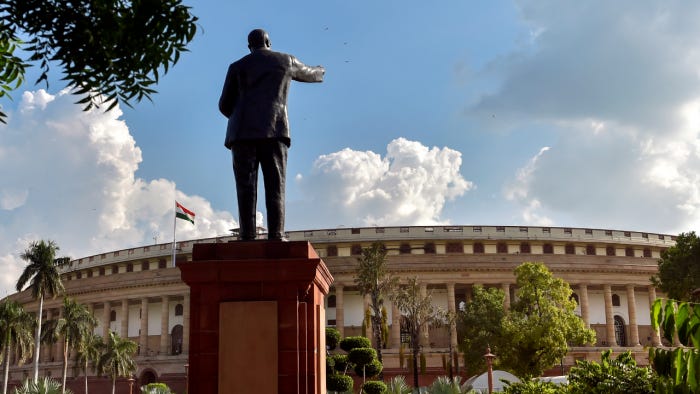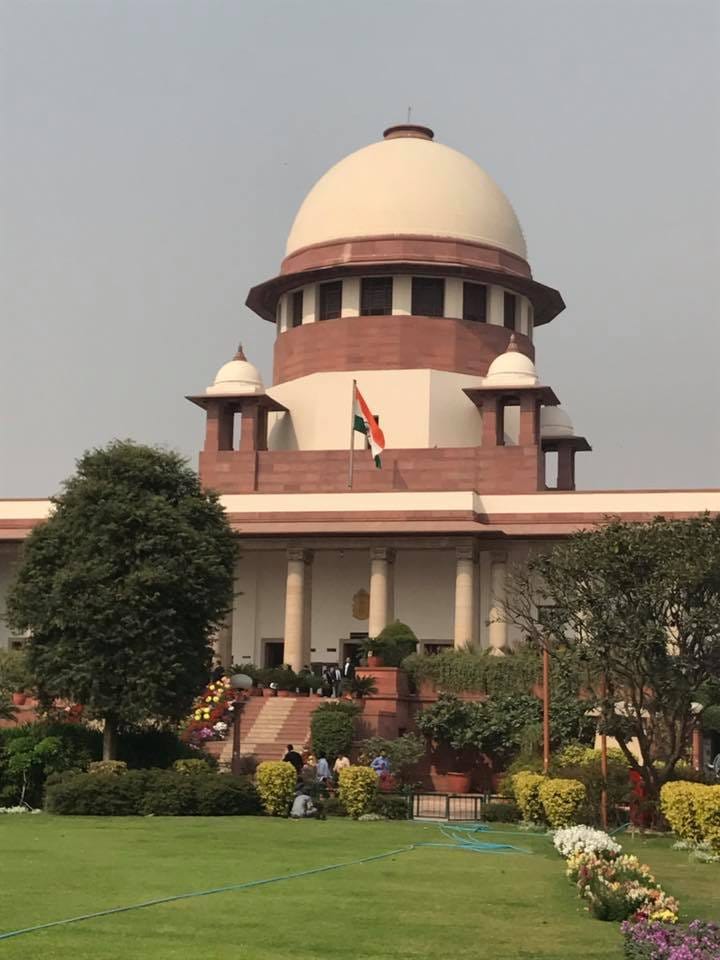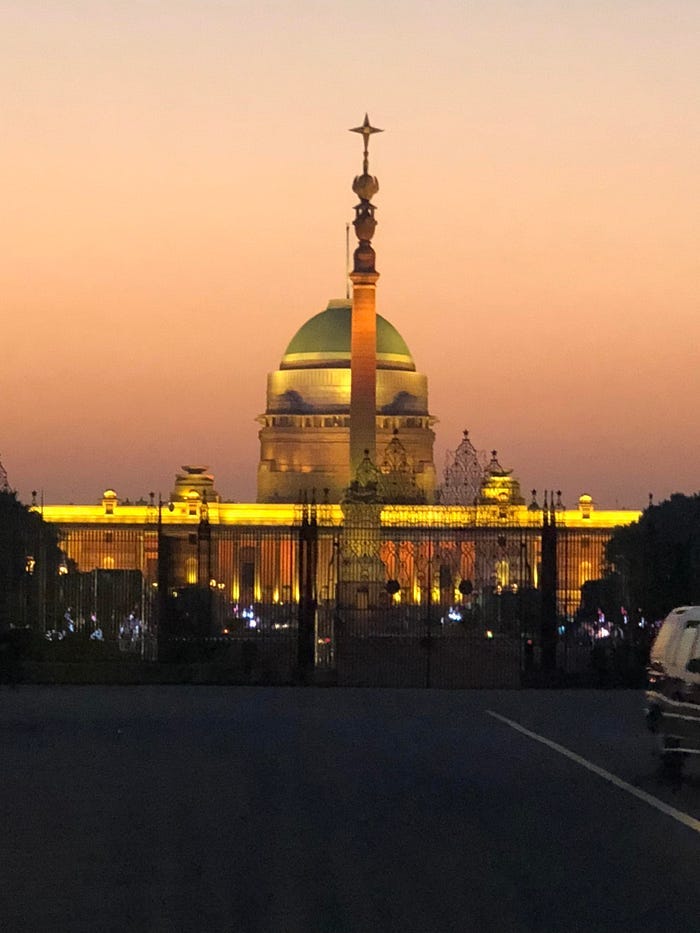Preserve, Don’t Tinker: Safeguarding the Constitution and the Kesavananda Bharati Judgment
Preserving the Spirit of the Constitution: The Risks of Codifying the Basic Structure Doctrine.
The Risks of Codifying the Basic Structure Doctrine
In India, the Constitution stands as the bedrock of our democracy, embodying the collective vision of the framers to establish a just, equitable, and enduring nation-state. It is within this framework that the Basic Structure Doctrine, articulated in the landmark Kesavananda Bharati v. State of Kerala (1973) judgment, has served as a judicial bulwark against parliamentary overreach. However, as wide-ranging constitutional amendments centered around initiatives like "One Nation, One Election" gain traction, it becomes imperative to revisit and evaluate calls to codify this doctrine within the constitutional text, through comprehensive constituional amendments.
The proposal by Manish Tewari, a seasoned lawyer and former Union Minister, to formally incorporate the Basic Structure Doctrine through constitutional amendments is well-intentioned. His analysis of the doctrine’s evolution and significance reflects a deep understanding of its importance in safeguarding the democratic ethos of the nation. However, such codification, rather than strengthening the Constitution, could expose it to risks that undermine the very principles it seeks to protect.
The Context of India’s Constitutional Journey
The Kesavananda Bharati judgment, decided by a narrow 7-6 majority, introduced the Basic Structure Doctrine, holding that certain core features of the Constitution—such as secularism, federalism, the republican structure, and parliamentary democracy—are beyond the amending powers of Parliament. Furthermore, an independent judiciary and its limited power to review executive orders and legislative enactments, and to set them aside if found unconstitutional, were also recognized as basic features. By leaving these features undefined, the Court ensured flexibility, allowing the judiciary to adapt the doctrine to evolving socio-political contexts while preserving the Constitution’s fundamental ethos.
At its heart, the doctrine is not a fixed checklist but a principle-based safeguard. It prevents transient parliamentary majorities, driven by short-term political objectives, from altering the Constitution’s core and jeopardizing its foundational values. For instance, this flexibility has allowed the doctrine to respond to challenges such as the Minerva Mills case (1980) and, more recently, the National Judicial Appointments Commission (NJAC) case (2015), ensuring that no amendment diminishes the spirit— or erodes the core features— of the Constitution.
The Risks of Codification: Lessons from Global Examples
The recent example of the United States offers a cautionary tale. President Donald Trump issued an executive order attempting to suspend the principle of birthright citizenship, a cornerstone of the 14th Amendment to the U.S. Constitution. This amendment, which guarantees citizenship to all individuals born on U.S. soil regardless of their parents’ immigration status, has been a settled legal principle for over a century. While a federal court temporarily stayed the order, the attempt demonstrates how long-held constitutional practices can be threatened by executive overreach.
Similarly, codifying the Basic Structure Doctrine in India’s Constitution could inadvertently open the door to its future dilution or reinterpretation, ironically through questionable constitutional amendments. If a temporary yet ambitious parliamentary majority were to amend or redefine these codified "basic features," it could undermine the judiciary’s vital oversight role, leaving the Constitution vulnerable to political whims with far-reaching and potentially irreversible consequences.
The Dangers of Parliamentary Overreach
India’s political landscape has experienced shifts in parliamentary power that highlight the critical need for judicial safeguards. While a codified Basic Structure Doctrine might ostensibly offer clarity, it could paradoxically introduce greater risks. Formalizing the doctrine through constitutional amendments would grant Parliament the authority to subsequently alter, delete, or reinterpret these codified features. This would fundamentally undermine the very essence of the Kesavananda Bharati judgment, which safeguards the Constitution against being rewritten by transient political majorities whose influence may last no longer than five years, or at most a decade.
n the context of "One Nation, One Election," aligning the electoral cycles of Parliament and state legislatures may appear efficient on the surface. However, imposing such alignment could significantly undermine the federal structure and erode the autonomy of state legislatures, both of which are integral to India’s democratic framework. Moreover, it raises a critical challenge: how to address a fragile Lok Sabha, particularly in scenarios where clear majorities fail to emerge, as history has often shown. The choice in such situations would ultimately be between holding a fresh Lok Sabha general election or imposing “President’s Rule” at the Centre for the residual term—each fraught with its own complications. Unchecked, these changes could destabilize the delicate balance of power between the Union and the states, striking at the heart of the Constitution's basic structure.
The Fallacy of Roe v. Wade Comparisons
The article's reference to the U.S. Supreme Court's Dobbs v. Jackson Women’s Health Organization (2022) overturning Roe v. Wade (1973) is misplaced. The American judiciary operates within a highly polarized political landscape, where judicial appointments often reflect ideological leanings. In the context of "One Nation, One Election," aligning the electoral cycles of Parliament and state legislatures may appear efficient on the surface. However, imposing such alignment could significantly undermine the federal structure and erode the autonomy of state legislatures, both of which are integral to India’s democratic framework. Moreover, it raises a critical challenge: how to address a fragile Lok Sabha, particularly in scenarios where clear majorities fail to emerge, as history has often shown. The choice in such situations would ultimately be between holding a fresh Lok Sabha general election or imposing “President’s Rule” at the Centre for the residual term—each fraught with its own complications.
Unchecked, these changes could destabilize the delicate balance of power between the Union and the states, striking at the heart of the Constitution's basic structure. It is here that the Kesavananda Bharati judgment shines as a beacon light in the Indian Republic, evolving over time to emerge as the true protector of the spirit of the Indian Constitution as envisioned by the Founding Fathers. In contrast, the Indian judiciary, though not immune to criticism, has largely maintained its independence. The Kesavananda Bharati judgment is a product of this independence and remains a bulwark against the politicization of the innate constitutional principles.
Judicial Flexibility: A Strength, Not a Weakness
The judiciary’s interpretation of the Basic Structure Doctrine provides the necessary flexibility to address emerging challenges. By deliberately leaving the "basic features" undefined, the Kesavananda Bharati judgment allowed for a nuanced approach, enabling courts to assess each case on its merits. This "play within the joints" has ensured that the doctrine remains a living entity, responsive to the needs of a dynamic democracy.
Codification, by contrast, risks freezing these principles in time, making them susceptible to rigid interpretations or political manipulation. The judiciary’s role as the ultimate guardian of the Constitution would be diminished, shifting power to a Parliament that may not always act in the nation’s long-term interests.
Conclusion: Safeguarding the Constitution’s Spirit
As custodians of India’s constitutional legacy, it is our duty to preserve the delicate balance between flexibility and rigidity that has allowed the Basic Structure Doctrine to endure. While the idea of codification may stem from noble intentions, it risks exposing the Constitution to the very threats it seeks to guard against.
To borrow from Brutus in Shakespeare’s Julius Caesar: “Not that I loved Caesar less, but that I loved Rome more.” Similarly, we deeply cherish our Constitution, but we love India more. The Constitution is our guiding star, but it is the enduring principles of democracy, justice, and liberty that form the soul of the nation. Safeguarding these principles requires not rigidity, but the adaptability and judicial oversight that have been the hallmark of the Basic Structure Doctrine. Let us ensure that this cornerstone of our democracy remains inviolable, preserving not just the text of the Constitution, but the idea of India it embodies.




